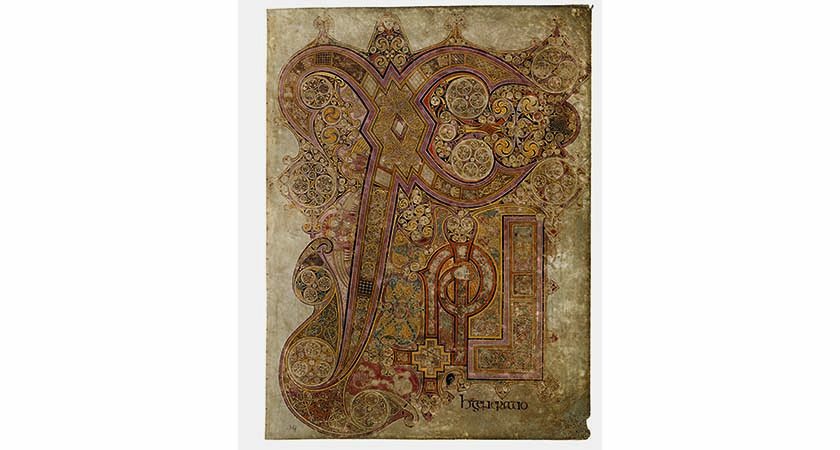A RICH collection of Celtic art has been collected in a new book that celebrates precious handicraft, weaponry, leatherwork, stone art and ornamental illuminated manuscripts from the beginning of the seventh century to the eighth century AD.
Celtic Art is a celebration of more than 250 emblematic artworks, spanning the entire Celtic world, from Ireland to France, Italy to Hungary, the Czech Republic to Germany and Austria.
Written by leading Celtic expert, Venceslas Kruta, and published by Phaidon, the book highlights art from the British Isles and Ireland in particular, and The Irish Post has picked out six of the most stunning pieces.
1. Ceremonial shield
 Photo: Werner Forman Archive/British Museum
Photo: Werner Forman Archive/British MuseumMetal covering from a ceremonial shield made of organic material, found in 1857 on the bed of the Thames in Battersea, London, Great Britain.
(British Museum, London)
This well-preserved small shield, dating back to 180–120 BC was used for ceremonial purposes and has a smooth surface with metal adornments. Part of the design is most likely inspired by the Celtic concept of space. The elegant design and workmanship reflected British style at the time, which existed between the original appearances of Celtic art in the third century BC and the period before the Roman conquest.
2. Bone slips
 Photo: Werner Forman Archive/National Museum of Ireland
Photo: Werner Forman Archive/National Museum of IrelandBone slips, part of several thousand similar objects found from 1863 to 1943 on the megalithic site at Lough Crew, mainly from Cairn H, Co. Meath Ireland.
(National Museum of Ireland, Dublin)
This engraved bone slip from Lough Crew are a remarkable example of the variety of decorations with compasses from British art at its height. The context of their discovery – a megalithic site and holy place – along with their finish and shape, suggest they were supernatural offerings.
3. Torque with rings
 Photo: Trustees of the British Museum
Photo: Trustees of the British MuseumTwisted torque with rings at the ends, from the deposit of sixty-three gold torques discovered in 1990 at Ken Hill Snettisham, Norfolk, Great Britain.
(British Museum, London)
This torque illustrates the original adaptation of this type of jewellery in the first decades of the third century BC, and is most probably locally produced work.
4. Spearhead
 Photo: Werner Forman Archive/British Museum, London
Photo: Werner Forman Archive/British Museum, LondonSpearhead found on the bed of the Thames in London, Great Britain about 100–10 BC.
(British Museum, London)
In this spearhead, the use of two metals – iron and bronze – emphasises the contrasting shapes of the decorations. They could suggest silhouettes of pairs of monsters with a beak and a crest, one of the recurrent themes in Continental Celtic warrior imagery.
5. Monumental cross
 Photo: John Donnellan
Photo: John DonnellanMonumental cross of Muiredach, Monasterboice, Co. Louth
The support is the Celtic design of a cross but now at its centre is Christ, who takes the place of the deity of the world tree as the source of life and universal order. Biblical scenes replacing the symbolic patterns of traditional imagery enliven the panels.
6. Illuminated 'Chi-Rho- page of the 'Book of Kells'
 Photo: The Board of Trinity College Dublin
Photo: The Board of Trinity College DublinIlluminated 'Chi-Rho' page of the 'Book of Kells'
(Trinity College Library, Dublin)
One inevitable result of the adoption of Christianity was that writing became a means of conveying and preserving religious thought. The traditional imagery did not, however, disappear in Ireland. It was maintained with for a long time in the service of the new faith.
Celtic Art by Venceslas Kruta, £39.95 / €49.95, Phaidon 2015, www.phaidon.com

